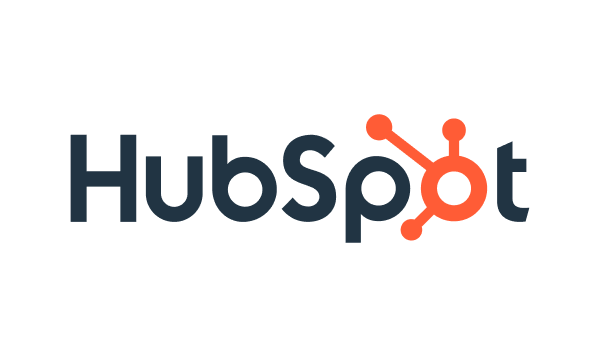- Premium features included
- No hidden costs or usage limits
- Scale from startup to enterprise



You’ve probably heard both names thrown around in marketing conversations. Mailchimp, the friendly email platform that feels approachable. HubSpot, the serious all-in-one system that promises to solve everything. But which one makes sense for your actual situation?
Here’s what I found after digging into both platforms: Mailchimp wins on simplicity and cost, especially if email marketing is your main focus. HubSpot takes the crown when you need serious CRM power and don’t mind paying for it. The gap between them is bigger than you might think.
The short version: Small businesses usually do better with Mailchimp’s $13/month starting price. Growing companies with sales teams? HubSpot’s $20/month entry point makes more sense, even though it gets expensive fast.
Mailchimp
HubSpot
Tool type
Email marketing platform
Full business platform (CRM + marketing)
Starting price
$13/month for 500 contacts
$20/month for 1,000 contacts
Free version
500 contacts, 1,000 emails/month
100 contacts, 2,000 emails/month
Best fit
Online stores, content creators, small teams
B2B companies, sales-heavy businesses
Learning curve
Pretty easy to use
Takes some time to figure out
CRM
Basic contact tracking
Serious sales pipeline management
Mailchimp
HubSpot
Email templates
100+ designs that look good
8 free templates, more if you pay
Email builder
Drag-and-drop with AI help
Clean builder with smart features
Automation
Pre-made customer journeys
Complex workflows with lead scoring
CRM integration
Contact lists and basic tracking
Full sales pipeline with deal management
Landing pages
Unlimited on paid plans
Included everywhere
Social media
Basic posting to Facebook, Instagram
Advanced management across all platforms
Analytics
Email-focused reports
Business intelligence across everything
A/B testing
Standard plan and up
Professional tier and higher
Integrations
300+ apps
1,700+ marketplace options
Think of Mailchimp as the email marketing specialist. It does one thing really well rather than trying to be everything to everyone. The platform shines with its 100+ automation templates that let you set up customer journeys without coding or complex setup.
What makes it work? The AI-powered segmentation actually helps you target the right people. Plus, if you’re running an online store, the e-commerce integrations are solid. Users report getting 7x more orders through automated flows compared to basic email blasts.
The interface feels intuitive. You can usually figure out where things are without hunting through menus. For small businesses that need email marketing to just work, this matters more than fancy features.
HubSpot plays a different game entirely. It’s built for businesses that need marketing and sales to work together, not just send newsletters. The CRM integration isn’t an afterthought—it’s the whole point.
Where it gets interesting is the automation complexity. You can build workflows that track someone from first website visit to closed deal. Lead scoring, behavioral triggers, the works. About 79% of users say it helped them centralize their business data, which makes sense when you see how everything connects.
The AI features are more advanced too. Content generation, predictive forecasting, automated task management. It’s powerful stuff, but you need to actually use it to justify the cost.
Mailchimp
HubSpot Marketing Hub
Free
500 contacts, 1,000 sends/month
100 contacts, 2,000 sends/month
Entry level
$13/month (500 contacts)
$20/month (1,000 contacts)
Mid-range
$20/month (500 contacts)
$890/month (2,000 contacts)
Mid-range
$350/month (10,000 contacts)
$3,600/month (10,000 contacts)
Setup fees
None
$3,000-$7,000 for bigger plans
Here’s where things get real. Mailchimp’s Standard plan costs $60/month for 2,500 contacts. HubSpot’s comparable Professional plan? $890/month for 2,000 contacts. That’s not a typo.
The pricing philosophy is completely different. Mailchimp tries to stay affordable as you grow. HubSpot assumes you’ll pay more for integrated features that replace multiple tools.
Mailchimp Free
HubSpot Free
Contacts
500 marketing contacts
100 marketing contacts
Monthly emails
1,000 (500 per day max)
2,000 (but no campaigns to groups)
Automation
Basic flows included
Limited automation
Templates
12 basic options
8 modern designs
Remove branding
Nope
Nope
Support
Email for first 30 days
Email and chat
Mailchimp’s free plan actually lets you do email marketing. HubSpot’s free version is more about CRM with some email features attached. Different priorities.
Mailchimp
HubSpot
The appeal is obvious: it’s simple and it works. You can set up a campaign in minutes, not hours. The template library is solid, and the automation features handle most common scenarios without getting overly complex.
But there are limits. The CRM functionality is basic contact management, not real sales pipeline tracking. And while the support is decent, response times can drag when you need quick answers. Users often mention hitting walls when they try to do anything beyond straightforward email marketing.
When it works well, HubSpot really works. The integrated approach means your marketing data flows directly to sales, and customer service can see the whole relationship history. About 84% of new users are actively using the platform within two weeks, which suggests the onboarding actually helps.
The problem? Cost and complexity. Those $3,000-$7,000 onboarding fees for higher plans aren’t optional extras—they’re necessary to avoid drowning in features you don’t understand. Many small businesses simply can’t justify the investment, even if the platform would theoretically help them grow.
Both platforms score 4.5/5 stars, but for different reasons. Mailchimp users love the “intuitive interface and cost-effectiveness.” One reviewer put it simply: “Great option for small business and beginners.” The complaints? Costs jumping quickly and limited advanced features.
HubSpot users appreciate the comprehensive approach. A common theme: “HubSpot was more feature rich, and the features it had over Mailchimp meant I could manage my customers and leads better.” But pricing comes up constantly as a barrier.
The Capterra crowd echoes similar themes. Mailchimp gets praised for being “user-friendly” and “effective for basic list management.” Users like that they can create professional emails without much technical skill.
HubSpot reviewers mention the learning curve but value the integration. One user noted switching from separate tools: “Although these tools were efficient separately, they did not seem well coordinated. With HubSpot, we did not require other tools to monitor our marketing campaigns.”
Reddit discussions tend to be more blunt. Mailchimp gets recommended for “small businesses and startups” with straightforward needs. The consensus seems to be that it works great for email marketing, period.
HubSpot conversations focus on whether the investment makes sense. Users warn about the “significant investment required” but acknowledge it’s powerful for businesses that can use the full feature set.
Go with Mailchimp if:
Choose HubSpot if:
The truth is, both platforms are good at what they’re designed for. Mailchimp keeps email marketing simple and affordable. HubSpot provides serious business management tools for companies ready to invest in growth infrastructure.
Your choice probably comes down to where you are right now versus where you want to be in two years. And honestly? You can always start with one and switch later if your needs change.
